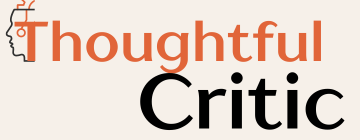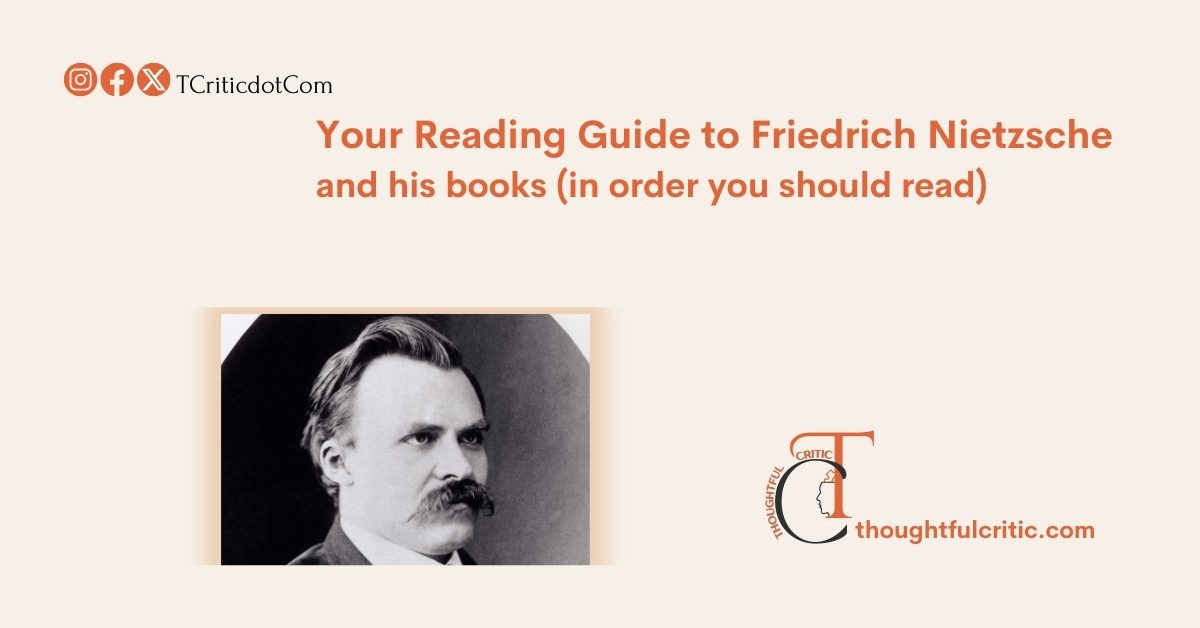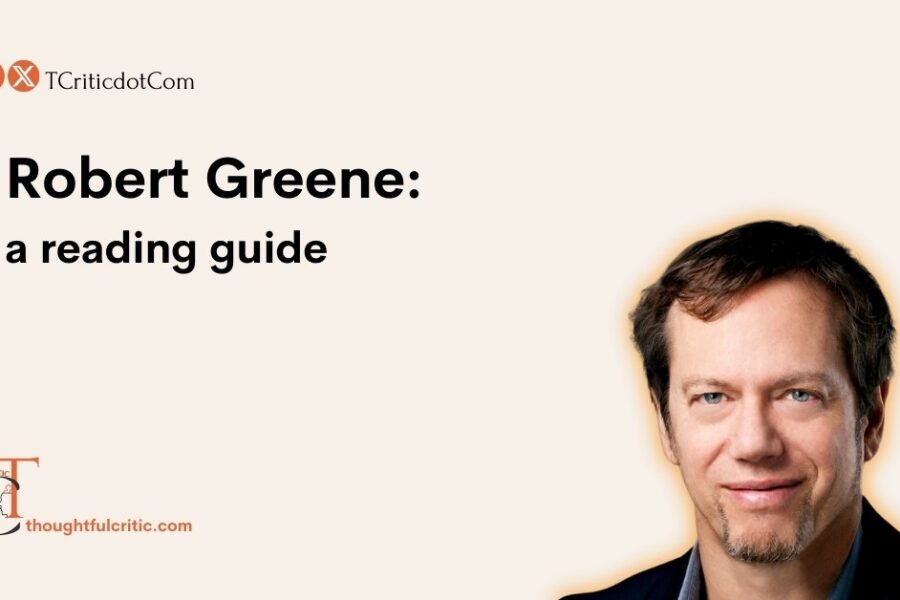How to Read Friedrich Nietzsche: A Beginner’s Guide to His Major Works and Ideas
Friedrich Nietzsche is, by turn, provocative, poetic, impenetrable, and electrifying. His writing thunders at the walls of conventional morality and whispers the quiet rebellion inside every human heart. For the newcomer, Nietzsche may feel like trying to scale a mountain in thick fog, stunningly beautiful on glimpses of clarity, disorienting in the dark. Yet it is precisely this tension that makes his oeuvre so energising and endlessly relevant. This beginner’s reading guide offers a clear path through his significant works, providing summaries, context, and guidance on how to approach his philosophical fire without getting burned.
Why Read Nietzsche?
Nietzsche dismantles the comfortable creeds of his time, religion, democracy, and polite philosophy, and then offers shards of possibility in their place. His is not a philosophy that consoles. Instead, it calls for courage: the courage to question your deepest beliefs, the courage to write your values, and the courage to affirm life even when reason fails.
He is less a system-builder than a provocateur, less a metaphysician than a cultural archaeologist unearthing the psychological and historical roots of our moral habits. Terms like the will to power, eternal recurrence, Übermensch, and slave morality skip across his pages like sparks. To read Nietzsche is to learn their electric charge and then to strike your flame.
His impact spans existentialism, postmodernism, literary criticism, psychology, and political thought. As one contemporary account observes, Nietzsche’s “will to power” has shaped discourse across the 20th century and beyond, embedding itself in varied and often conflicting ideological traditions. Reading Nietzsche offers not answers, but vital disruption, and that disruption is precisely what keeps his thought alive.
Beginner‑Friendly Reading Order: A Guided Path
Nietzsche’s works are deliciously disordered. Begin with approachable entries that reveal his voice. Then progress through his middle period, where ideas blossom. Finally, enter his late work for the most intense, lyrical, and confrontational material. Here is a suggested sequence:
1. Twilight of the Idols (1888)
This compact and incisive work is frequently recommended as the most accessible entry point into Nietzsche’s thinking, not because it compromises in depth, but because it distils a vast landscape of ideas into brief, aphoristic form. In fewer than a hundred pages, Nietzsche swings a philosophical hammer at what he calls “idols”, entrenched systems of thought, including Christianity, metaphysics, and the Socratic glorification of reason. The book’s subtitle, How to Philosophize with a Hammer, captures the tone: irreverent, playful, yet incisively diagnostic. In “The Problem of Socrates,” Nietzsche critiques the life-denying impulse of rationalism. In “Morality as Anti-Nature,” he argues that moral systems that suppress instinct are fundamentally pathological. The book introduces several foundational Nietzschean themes—ressentiment, the will to power, and a sharp rebuke of Christian morality, as crystallised in potent, often paradoxical, prose. It serves as an excellent primer because it offers Nietzsche in his most lucid, confrontational, and aphoristically explosive mode. Click here to get a copy from Amazon
2. The Anti-Christ (1895)
Written during Nietzsche’s late period, The Anti-Christ is not merely a polemic against Christianity but an ethical and psychological dissection of what he considers a life-denying moral framework. It continues the critique of values begun in Twilight of the Idols, yet goes further in tone and substance. For Nietzsche, Christianity represents the triumph of “slave morality,” a morality born not from strength and affirmation, but from weakness, envy, and fear. The book indicts Christian virtues such as humility, compassion, and meekness as tools of moral inversion, strategies employed by the weak to vilify strength and vitality. Nietzsche’s concept of “decadence” plays a central role here, as he sees the Christian worldview as a symptom of cultural decline and psychological exhaustion. Despite its brevity, the text is dense with historical reference, rhetorical intensity, and philosophical provocation. While undeniably caustic, The Anti-Christ is essential for understanding Nietzsche’s broader project of revaluating values and offers a forceful entry into his radical vision of ethics and culture. Click here to get a copy from Amazon
3. Human, All Too Human (1878–1880), Daybreak (1881), and The Gay Science (1882; expanded 1887)
These three works mark Nietzsche’s “middle period,” a transitional phase in which his early aesthetic idealism gives way to a more rigorous psychological and cultural analysis. This phase is critical for newcomers because it reveals Nietzsche in the process of discovering his distinctive voice, not yet cloaked in prophecy, but grounded in observation and reflection.
Human, All Too Human is a turning point. It abandons metaphysical speculation in favour of a scientific and historical critique of human values, customs, and beliefs. Here, Nietzsche begins to position philosophy as a form of cultural criticism, influenced by the Enlightenment yet wary of its optimism.
Daybreak continues this movement, explicitly subtitled “Thoughts on the Prejudices of Morality.” Nietzsche begins excavating the genealogies of our moral instincts, laying the groundwork for later works such as On the Genealogy of Morality. He introduces the idea that morality is not universal or absolute, but contingent and historically shaped, often by unconscious drives masked as virtues.
The Gay Science is perhaps the most lyrical and emotionally rich of the trio. It contains Nietzsche’s famous proclamation, “God is dead,” not as a triumph but as a cultural challenge: how should humanity live after the collapse of its highest values? The work introduces the idea of eternal recurrence and features the first mention of the Übermensch. Playful, poetic, and often deeply personal, this text acts as a bridge to Nietzsche’s more allegorical and aphoristic late style. Reading these three books in order helps one appreciate the evolution of Nietzsche’s thought and prepares the reader for his more complex works. Click here to get a copy from Amazon
4. Beyond Good and Evil (1886)
If Twilight of the Idols is the spark, then Beyond Good and Evil is the firewood. It deepens, systematises, and expands Nietzsche’s philosophical outlook. In this work, Nietzsche challenges the “philosophers of the past” for their dogmatic adherence to binary moral categories and static metaphysical assumptions. He argues instead for perspectivism, the idea that there are no absolute truths, only interpretations shaped by individual and cultural forces. This is also where Nietzsche most clearly outlines the will to power as a psychological and existential force underlying all human activity, from politics to art.
Structured in 296 aphorisms followed by a concluding poem, the book defies easy summarisation. Topics range from morality and truth to nationalism, gender, and the dangers of democracy. Unlike the more aphoristic works of his middle period, Beyond Good and Evil reads like a philosophical manifesto, subtler than a polemic, but more assertive than a meditation. It is essential for readers interested in Nietzsche’s mature philosophy, particularly his critique of Enlightenment rationalism and the psychological roots of moral judgment. A background in his earlier writings makes this book significantly more rewarding. Click here to get a copy from Amazon
5. On the Genealogy of Morals (1887)
Widely considered Nietzsche’s most sustained and intellectually rigorous work, On the Genealogy of Morals (also Morality at times) comprises three interrelated essays that excavate the historical and psychological origins of Western morality. This is Nietzsche as genealogist, working not as a preacher or aphorist, but as an archaeological thinker uncovering the sedimented layers of moral history. The first essay contrasts master morality, rooted in affirmation and strength, with slave morality, born of resentment and weakness. The second essay explores guilt, punishment, and the internalisation of instincts, an early sketch of what later thinkers would call the “superego.” The third essay examines the ascetic ideal, showing how the rejection of desire has been morally glorified, particularly within religious traditions.
The Genealogy is foundational to modern philosophy, ethics, cultural theory, and psychoanalysis. Michel Foucault credited it with influencing his entire method of analysis. Yet for all its academic heft, the work remains stylistically vivid, even vicious, punctuated by rhetorical flourishes and bitter laughter. It is not an easy read, but for those who have followed Nietzsche’s development thus far, it offers a rewarding synthesis of his key concerns: power, morality, history, and psychological depth. Click here to get a copy from Amazon
6. Thus Spoke Zarathustra (1883–1885)
Nietzsche once said that Zarathustra was “by far the most profound book” he had ever written. But it is also the most difficult. Part scripture, part philosophical allegory, and part poetic experiment, Thus Spoke Zarathustra does not argue; it sings, warns, mocks, and proclaims. At its core is the figure of Zarathustra, a solitary prophet who descends from his mountain to preach the doctrine of the Übermensch and the eternal recurrence. Yet unlike religious prophets, Zarathustra does not offer salvation. He calls instead for transformation—an existential metamorphosis in which man must overcome himself.
This book is deeply symbolic and highly stylised, often parodying biblical structures to subvert their moral content. For the uninitiated, its prophetic tone and elliptical structure can feel alienating. Many readers mistakenly begin here and find themselves overwhelmed. It is far better approached with a grounding in Nietzsche’s earlier works, particularly The Gay Science and Beyond Good and Evil. When read in context, Zarathustra reveals its poetic brilliance and philosophical audacity. It is not meant to be interpreted in a single reading, but to be returned to, puzzled over, and lived with. Nietzsche himself called it “a book for everyone and no one,” and perhaps that is the most accurate summary of all. Click here to get a copy from Amazon
7. Ecce Homo (1888)
This late autobiographical work, composed just before Nietzsche’s mental collapse, reads like a philosophical memoir, performance piece, and self-mythologising text all at once. With chapter titles such as “Why I Am So Wise,” “Why I Write Such Good Books,” and “Why I Am a Destiny,” Nietzsche uses biting irony to reflect on his life, his works, and his philosophical mission. Yet beneath the flamboyance lies weighty introspection. He revisits each of his major writings, providing retrospective commentary and positioning them within his broader intellectual vision.
Ecce Homo also explores Nietzsche’s personal suffering, his illnesses, his solitude, and the spiritual demands of his project. It is a human, often heartbreaking, document that unveils the weight of Nietzsche’s ambition and the limits of his endurance. This is best read last, not simply because it draws together the threads of his thinking, but because it demands a familiarity with Nietzsche’s journey to appreciate its tone and substance. It is both a celebration and a warning, a confession and a performance, and ultimately, the final piece in Nietzsche’s intellectual self-portrait. Click here to get a copy from Amazon
Summary of Suggested Reading Path
- Late and punchy: Twilight of the Idols, The Anti‑Christ
- Middle‑period foundation: Human, All‑Too Human, Daybreak, The Gay Science
- Mature system: Beyond Good and Evil, On the Genealogy of Morality
- Iconic mythic vision: Thus Spoke Zarathustra
- Personal summation: Ecce Homo
Tips for First‑Time Readers
- Take it slow: Nietzsche writes in aphorisms, rich but compressed. Rushing through means missing the bite.
- Use guides wisely: Works like Walter Kaufmann’s commentary or introductory essays can help unpack dense ideas.
- Embrace ambiguity: Nietzsche delights in contradiction. Avoid forcing a single systematic interpretation.
- Read reflectively: Let passages echo. Re‑read aphorisms; journal your reactions, and question your assumptions.
- Context helps: Know the intellectual backdrop—Schopenhauer, classical philology, and 19th‑century moral culture; so you see Nietzsche’s targets and provocations.
Why This Path Works
Starting with the short, high‑impact works helps build confidence. The aphoristic mid‑period texts train you to think with Nietzsche’s rhythms. The mature works deepen your conceptual grasp, and the poetic Zarathustra invites creative engagement with his vision. Finishing with Ecce Homo aligns Nietzsche’s authorial myth with your readerly journey, transforming you from novice to Nietzschean interlocutor. Along the way, you’ll encounter key ideas: perspectivism, will to power, eternal recurrence, revaluation of values, and the Übermensch—all at escalating levels of depth and intensity.
Parting Words
Friedrich Nietzsche remains one of philosophy’s most electrifying voices. He challenges us to live our lives not as reflections of inherited mass values, but as bold acts of self‑creation. This guided path values clarity without dilution, depth without despair, and transformation without dogma.
Your first encounter with Nietzsche may unsettle you. You may laugh aloud or wince in recognition. Let it unsettle you. Let it wake you. As Zarathustra wrote, “One must still have chaos in oneself to give birth to a dancing star.” Welcome to the chaos and your beginning.
Compiled, Constructed and Presented by Amit Mishra for Thoughtful Critic



